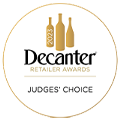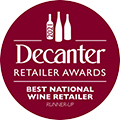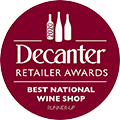As you may have already heard on the grapevine, 2022 will be remembered as a bit of a miracle vintage. With hot and dry conditions over much of the summer, it has been the complete opposite of 2021 which had struggled with a lack of sun and too much rain. Climatically, the 2022 vintage is much more like 2018 or even 2003, and yet it seems to be a huge success.
The Left Bank ‒ by which I mean the Médoc as a whole and including Pessac to the south of Bordeaux ‒ is based on free-draining, alluvial soil originally washed down from the Pyrenees, which naturally forces the vines to push their roots deeper to reach the water and nutrients they need. In drought conditions the vines tend to shut down – a condition known hydric stress– as a protective dormancy. This results in the grapes ceasing to mature to full ripeness whilst the leaves can turn yellow and fall off the vine. Yet in 2022, despite very high temperatures and a prolonged lack of rainfall, this didn’t happen. Why? Principally because the heat came early, and the vines ‘learnt’ to cope rather than stop. There was just enough water in the depths of the soil which was mainly tapped into by the deeper-rooted old vines, combined with cooler nights. This was aided by substantial herbage between vine rows which prevented water loss and lowered temperatures.
In effect, we had a hot and dry vintage ‒ named ‘Prophetic’ by the team Château Haut-Bailly as they and many others believe these conditions, due to global warming, are set to be the norm in the future. Alcohol levels will climb closer to 14% vol, as already indicated by the 2022 vintage, a far cry from the 12.5% vol typically achieved by the region a decade ago. The grapes will be smaller with thicker skins, giving less yield but with more concentration and higher tannic structures.
Merlot is usually planted on the cooler, wetter clay soils, and this year for the most part, many Left Bank châteaux used more Merlot as a percentage of their Grand Vin. The cooler nights kept the acidity levels up, which is why the main tasting note for many properties mentions “freshness”, and “purity of flavour” – descriptions we’d usually use in a cool vintage. Old-vine Cabernet Sauvignon also seemed to keep this acidity balance, meaning many of the top châteaux have made a great wine with character and personality.
Looking at the communes more closely, there were many eye-catchers we could mention, but we felt that no particular region had been ‘the best'. Saint-Julien, probably due to the predominance of historically good properties, has shown overall to be the most successful and consistent when attending the main group tastings ‒ wines that we all enjoyed. The Barton stable stands out, as does the Ducru-Beaucaillou stable. Branaire-Ducru is what several critics consider the ‘best yet’, while Gloria Saint Pierre and Talbot(and Connétable) have all performed very well.
Pauillac has done well with its customary denser, more powerful edge; 1st Growth Lafite is almost the complete opposite of many – sleek and sophisticated with the most gorgeous linear side to it. The Batailley wines under Freddy Castéja are on top form as is the perennial Tanners favourite Grand-Puy Lacoste. Other top Pauillac châteaux have made great wines too, but Pontet-Canet perhaps stood out among them.
Saint-Estèphe wines are patchier because the region was hammered by frost and hail in the spring and early summer. Yields were low across the board, with all available grapes having to go into the Grands Vins. Montrose is impressive, as is Calon Ségur whilst Phélan Ségur has made another good wine, as have the lesser lights of Lilian-Ladouys and our favourite Meyney.
Margaux has some genuine stars, but for us has a number of misses too, with big tannins swamping the fruit.Château Margaux has set the tone with a big, robust style this year, alongside a rich Palmer with plenty of substance. We kept going back to Angludet which seems to have sophistication which is missing in others. Gonzargue Lurton impressed us with his and Claire Villar’s very impressive, totally biodynamic Durfort-Vivens – rows of terracotta amphorae also having a major influence here, while La Gurgue is probably the best value-for-money Margaux on offer.
Pessac-Léognan wines are mostly good and occasionally very good. Rising star Les Carmes Haut-Brion has lived up to expectations, while Domaine de Chevalier is its usual impeccable, stylish self.Smith Haut Lafite is a pleasant surprise, Haut-Bailly has more star quality and Lespault-Martillac is noted by us as a good value offering.
The more affordable names of the Médoc, Listrac, Moulis and Haut-Médoc, we believe have made wines very true to recent form where, in some instances, the clay soils have helped them out considerably. La Tour de By is tremendous, way up the Médoc in Bégadan, producing a wine that doesn’t feel out of place when tasting against the cream of Pauillac that sell for ten times the price. Old favourite Cissac has found depth and density that make it very much a keeper, more so than in recent vintages. Chasse-Spleen is back on form, pleasing to see balance alongside the concentration. Other wines like Sénéjac Cantemerle and Mauvesin-Barton, whilst having their individual characters, have produced very good results and won critical acclaim.
For us, a team who has tasted together many vintages over recent years, 2022 is a great year. It is marked with genuine surprise for the winemakers but reflects the huge strides Bordeaux has taken to improve the quality and knowledge of their supreme region. There is more concern for the environment, biodiversity and less intervention in the vineyard. Gentler processes are the norm in the winery with smaller batches of wines made to increase the quality of the whole blend. To sum up, many of these wines are good enough to drink now, straight out of the barrel – an unthinkable notion even twenty years ago. Yet their superb balance translates to also possessing ageing potential, credit to their greater structure and substance compared to previous vintages. While it is still hard work getting around 40 properties and tasting 300 wines in just under a week, it isn’t a chore but a pleasure these days, and that looks set to continue.































